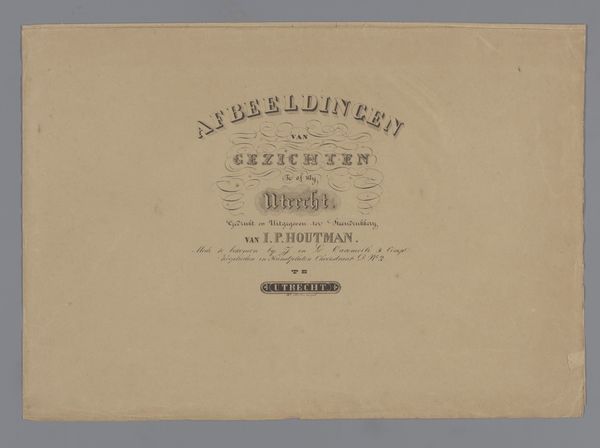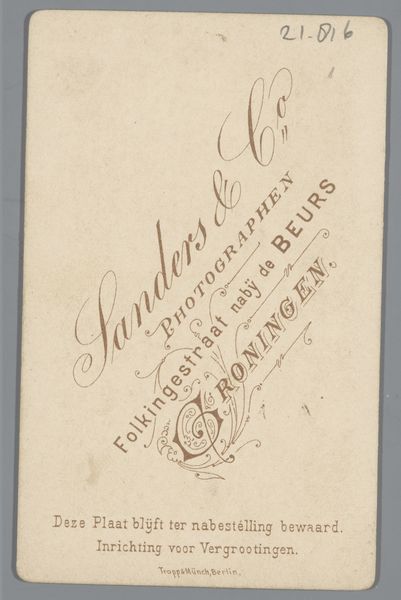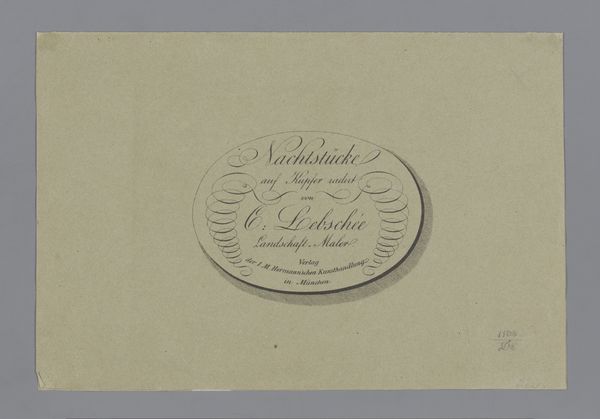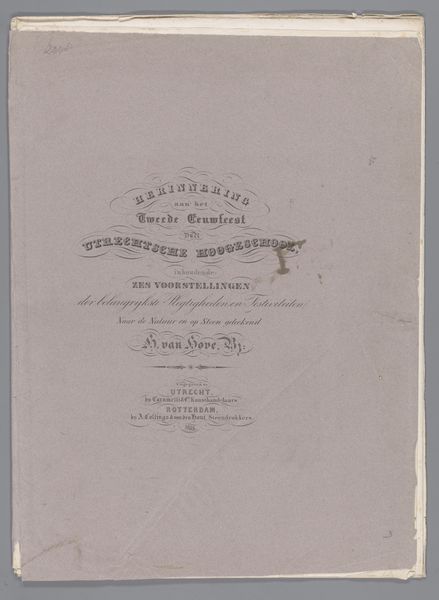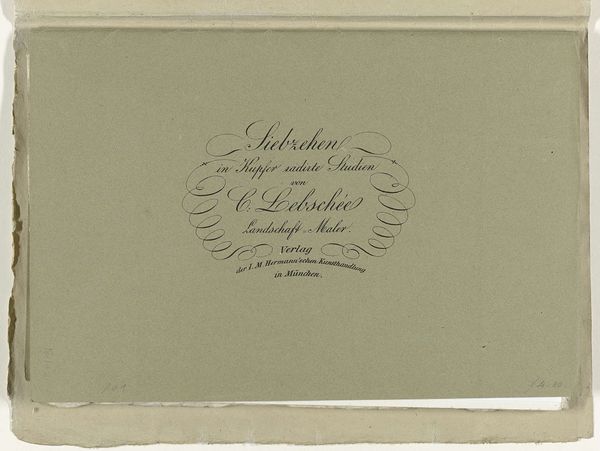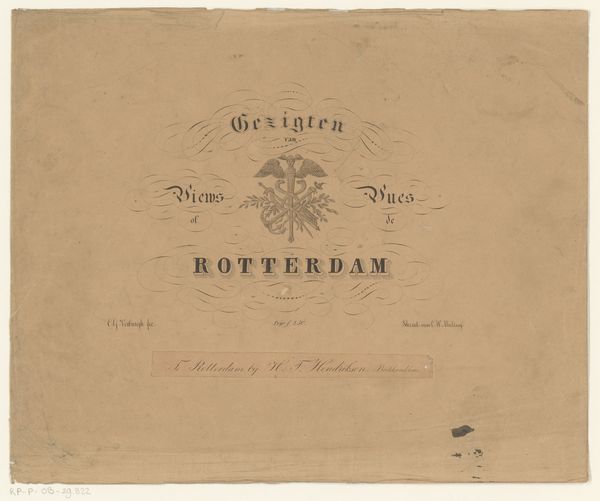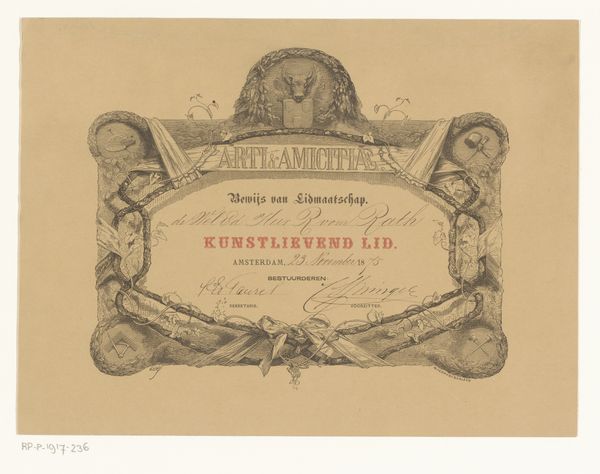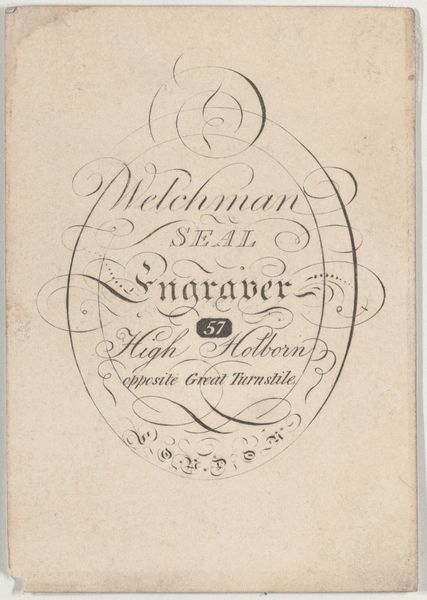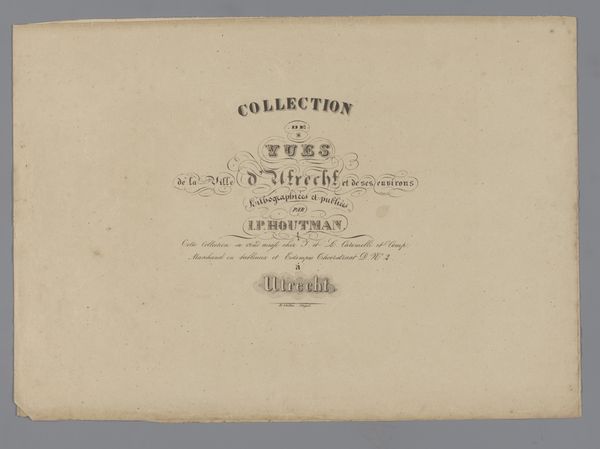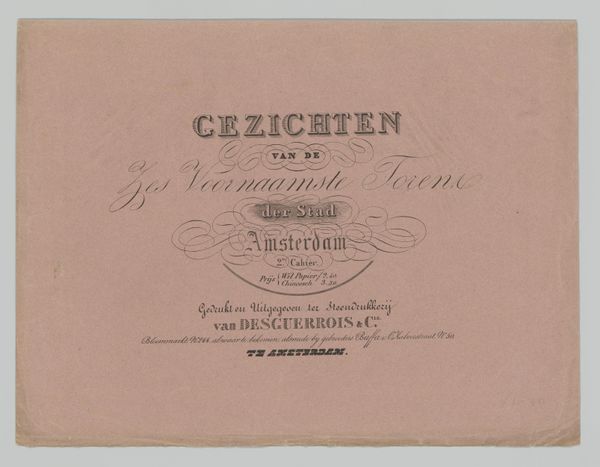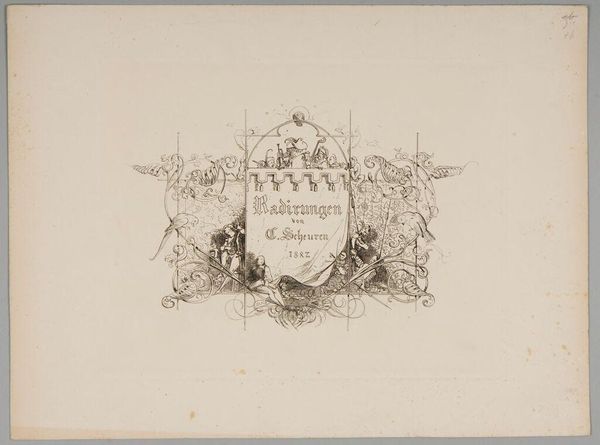
drawing, print, paper
#
drawing
#
aged paper
#
homemade paper
#
dutch-golden-age
# print
#
sketch book
#
hand drawn type
#
landscape
#
paper
#
personal sketchbook
#
hand-drawn typeface
#
fading type
#
romanticism
#
sketchbook drawing
#
storyboard and sketchbook work
#
sketchbook art
Dimensions: height 263 mm, width 403 mm
Copyright: Rijks Museum: Open Domain
Curator: Here we have "Omslag met serie landschappen," or "Cover with series of landscapes," attributed to Anthony Oberman, dating from 1809 to 1845. It is currently held at the Rijksmuseum. My initial response is a sense of age and delicate craftsmanship. The paper itself seems like a character in the piece. Editor: The immediate impact for me lies in the text. I'm drawn to the elegant hand-drawn typeface and the way the title "Landschapstudien van A. Oberman" is presented, almost floating with flourishes. Curator: That hand-drawn typeface speaks volumes. It connects us directly to the artisanal practices of the period – a time when even typography was a product of meticulous labor. Think about the individual responsible, perhaps someone at Gebr. Portman in Amsterdam, painstakingly creating this cover for Oberman’s landscape studies. What social circles did they move in, producing covers like this? Editor: I see a clear connection to the Romantic movement; Oberman offers the idea of the landscape as a container of personal and cultural memory. Those stylized letterforms are not merely informational. Rather, they convey something about cultivated taste and a reverence for classical aesthetics – that's what they signified, and may still signify, to certain audiences. The swirls, like idealized cloud formations or water currents, evoke harmony. Curator: Absolutely, and if you think of Romanticism as emerging from specific economic conditions – the rise of a mercantile class with new demands for aesthetically pleasing goods – then we can understand this cover as an object deeply embedded in its material and social context. Consider the paper itself, likely handmade, which has its own production chain that has aged visibly. Editor: The fading ink even adds a layer! What was once intended as pristine and timeless has surrendered to time, acquiring an elegiac quality. The landscape itself comes to signify not only visual beauty, but the ravages of time itself. That single brownish splotch could evoke some narrative, personal connection. Curator: Yes, it makes me wonder about its history: how it was bound, distributed, stored, and handled. Was it treated as a valuable object or used as something more ephemeral? I'm always intrigued by the untold story of these ordinary encounters between artwork and individuals throughout the years. Editor: Indeed. I came to this piece seeking cultural values embedded in symbols; but your description of its physicality helps to round the full sensory impact, placing it at a certain remove. So I find myself respecting this little landscape artwork.
Comments
No comments
Be the first to comment and join the conversation on the ultimate creative platform.
